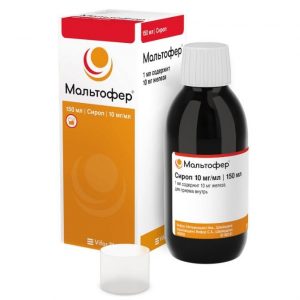Description
Pharmacological action
Pharmacological action – hydrating, detoxifying.
Pharmacokinetics
Dextrose, breaking down into pyruvic or lactic acid (anaerobic glycolysis), is metabolized to carbon dioxide and water with the release of energy.
Glucose is completely absorbed by the body, it is not excreted by the kidneys (the appearance in the urine is a pathological sign).
Pharmacodynamics
Glucose enhances redox processes in the body, improves the antitoxic function of the liver, covers part of the body ² ¢s energy expenditures, as it is a source of easily digestible carbohydrates.
Dextrose, entering the tissues, phosphorylates, turning into glucose-6-phosphate, which is actively involved in many parts of the body’s metabolism
A glucose solution of 400 mg / ml is hypertonic. When a hypertonic solution is injected into a vein, the osmotic pressure of the blood rises, contractile activity of the heart muscle intensifies, blood vessels expand, detoxification function of the liver improves, diuresis increases.
Indications
– hypoglycemia
– insufficient carbohydrate nutrition
Contraindications
– hypersensitivity to the drug
– hyperglycemia
– giperlaktatsidemiya
– hyperhydration
– hyperosmolar coma
– swelling of the brain
– pulmonary edema
– acute left ventricular failure
– postoperative disorders of glucose utilization
– circulatory disorders threatening brain edema and pulmonary
– decompensated diabetes mellitus
Precautions:
Decompensated chronic heart failure, chronic renal failure (oligo-, anuria), hyponatremia, diabetes mellitus
Composition
1 ml of the solution contains
active substance
– dextrose monohydrate in terms of dry matter – 400.0 mg
excipients:
hydrochloric acid 1 M solution up to pH 3.0-4.0,
sodium chloride, srd injection
Dosage and administration
Enter only intravenously, in a jet of 10-50 ml once. The maximum daily dose for adults is 250 ml.
Side effects
– impaired ionic balance
– hyperglycemia
– acute left ventricular failure
– fever
– hyperglycemic hyperosmolar coma
– impaired water-electrolyte erythematosus and dysplasia – sorblkp erythematosus with increased water balance and electrolyte ores –
At the injection site, the development of infection, sometimes thrombophlebitis
With repeated administration of the solution, functional disturbances of the liver and depletion of the insular apparatus of the pancreas are possible.
Overdose
Symptoms: hyperglycemia, glucosuria, hyperglycemic hyperosmolar coma, hyperhydration, impaired water-electrolyte balance, increased liponeogenesis with increased CO2 production, which leads to a sharp increase in minute respiratory volume, and, as a consequence, respiratory rate, fatty liver.
Treatment: stop administering glucose, administer short-acting insulin, symptomatic therapy.
Storage conditions
Store at a temperature of 5 ° C to 30 ° C.
Keep out of the reach of children!
active substance
Dextrose
lekarstvennaja form
Solution for infusion
Prescribing
For children as prescribed by the doctor, Pregnant as prescribed by the doctor, Adults as prescribed by the doctor, Nursing mothers




